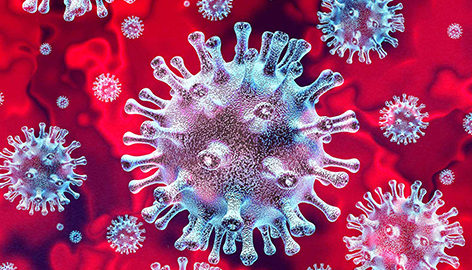

Are Coins and Notes a source of Covid-19 Contamination? First time in the history of humankind, every human from every corner of the world is affected by the Covid-19 pandemic. Such an atmosphere creates unprecedented panic and anxiety among the people. Due to the ongoing research about the cause and medium of a breakout, everything is under suspicion including currency notes and coins. The major objectives of Mintage World are to enhance the correct understanding of the evolving Covid-19, to share knowledge about preventive measures to avoid Covid-19 viruses.
As per to World Health Organisation (WHO) report, it is transmitted through droplets and fomites during close unprotected contact between an infector and normal person. The airborne spread has not been reported yet. The typical symptoms include fever, dry cough, fatigue, sputum production, shortness of breath, sore throat, headache, myalgia or arthralgia, chills, nausea or vomiting, nasal congestion, diarrhea, and hemoptysis, and conjunctival congestion. As Covid-19 is a newly discovered virus, hence there are no known pre-existing antibodies in humans. Therefore, it becomes our prime responsibility to take effective measures in order to avoid this pandemic.
A large number of queries are coming from all over the world to know whether hard cash is safe to use. Are Coins and Notes a source of Covid-19 Contamination? As small denomination banknotes and coins are more in circulation, so the risk of contamination becomes higher. Microbiologists suggested the Covid-19 virus can also survive on surfaces and can persist for three hours in the air, 24 hours on cardboard, and even longer on other hard surfaces. They also suggested that the probability of transmission through banknotes is low when compared with other frequently touched materials.
One instance is seen where the People’s Bank of China began in February to sterilize banknotes in regions affected by the virus. These initiatives are also taken by Central banks in South Korea, Hungary, Kuwait, and other countries to sterilize or quarantine banknotes, and thus to ensure that cash leaving central bank currency centers does not carry any kind of viruses. This leads to digital payment but in this too, few loopholes are evitable. For instance, debit and credit card transactions generally require a pin entry on swipe machines which is again used by countless people.
The research desk of the State Bank of India promulgated polymer-based currency and showed previous instances where Indian banknotes were found to be contagious with other pathogens. For example, King George’s Medical University, Lucknow stated that almost an entire sample of 96 banknotes and 48 coins were contaminated with viruses, fungus, and bacteria in 2015; Another study from Tamil Nadu showed 86.4% of 120 banknotes collected from doctors, banks, markets, butchers, students and housewives had various disease-causing pathogens in 2016; In 2016, Karnataka study showed 58 of 100 notes of Rs 100, 50, 20 & 10 were contaminated.
Lastly, Covid-19 spread by physical contact, international and national health organizations recommended practicing social distancing and self-quarantine. However, there is no satisfactory answer to the question “Are Coins and Notes a source of Covid-19 Contamination?” as there are very few examples to the query Are Coins and Notes a source of Covid-19 Contamination?
Image Courtesy: Indiaspend.com, Gtreview.com, Webmd.com
The Mintage World Team comprises of experts, researchers and writers from the field of Philately, Notaphily and Numismatics who try to shed light on some of the most interesting aspects of coins, banknotes and stamps from not just India but across the globe as well.